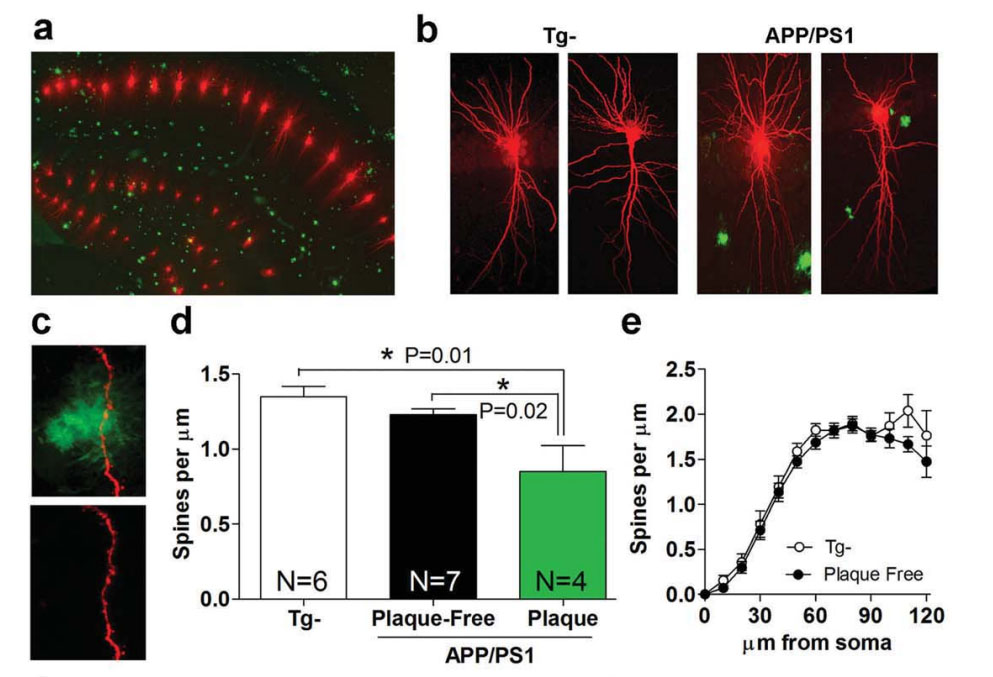Why memory is a particular target for the pathological changes in Alzheimer's Disease (AD) has long been a fundamental question when considering the mechanisms underlying this disease. It has been established from numerous biochemical and morphological studies that AD is, at least initially, a consequence of synaptic malfunction provoked by Amyloid β (Aβ) peptide. APP/PS1 transgenic mice accumulate Aβ throughout the brain, and they have therefore been employed to investigate the effects of Aβ overproduction on brain circuitry and cognition. Previous studies show that Aβ overproduction affects spine morphology in the hippocampus and amygdala, both within and outside plaques (Knafo et al., (2009) Cereb Cortex 19:586-592; Knafo et al., (in press) J Pathol). Hence, we conducted a detailed analysis of dendritic spines located in the stratum oriens and stratum radiatum of the CA1 hippocampal subfield of APP/PS1 mice. Three-dimensional analysis of 18,313 individual dendritic spines revealed a substantial layer-specific decrease in spine neck length and an increase in the frequency of spines with a small head volume. Since dendritic spines bear most of the excitatory synapses in the brain, changes in spine morphology may be one of the factors contributing to the cognitive impairments observed in this AD model. © 2010 Wiley-Liss, Inc.
